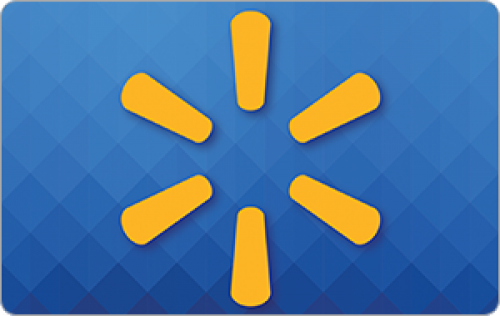Results: *** The Secret Genius of Modern Life *** "Barcode" The Universal Product Code
Published on 08/05/2024
Inventor Joe Woodland drew the first bar code in sand in Miami Beach, decades before technology could bring his vision to life

QUESTIONS
GO to COMMENTS
Comments
1.
1.
A distraught supermarket manager pleaded with a Dean at Drexel Institute of Technology in Philadelphia to come up with some way of getting shoppers through his store more quickly. The delays and the regular stocktaking were costing him his profits. The Dean shrugged him off, but a junior postgraduate, Bernard "Bob" Silver, overheard and was intrigued. He mentioned it to Woodland, who had graduated from Drexel in 1947. Woodland was already an inventor, and he decided to take on the challenge. He was confident that he would come up with a solution. Woodland left graduate school in the winter of 1948 to live in an apartment owned by his grandfather in Miami Beach. In January 1949 Woodland had his epiphany, he drew it with his fingers in the sand. He was seeking a code of some sort that could be printed on groceries and scanned so that supermarket checkout queues would move more quickly and stocktaking would be simplified. Its far-reaching consequences for modern existence were not recognized until many years later. Are you surprised that the original concept for the barcode was drawn in sand on a Miami Beach?
Yes
46%
1017 votes
No
24%
532 votes
Undecided
13%
286 votes
Not Applicable
17%
365 votes
2.
2.
In the early 70s, Computer Identics developed the barcode scanning technology that would change the world. It was based on lasers, which solved the problem of the impossible-to-use technology that Woodland invented … but lasers weren't much better. The public feared them, and they weren't doing well on the market. Until, suddenly, the dots connected. At a grocery tradeshow in 1971, RCA displayed an "ID scanning" tool gimmick; customers who successfully scanned an RCA tin with the ID scanner would win a prize. IBM happened to also be in attendance at the tradeshow and saw the tool's popularity. After the tradeshow, IBM began to follow up on the growing interest in barcode technology—and they intelligently transferred Woodland, so he could lead the barcode development team, In 1977: 200 stores use barcode scanner technology. Most companies weren't buying in because barcodes were really, really expensive, but the stores that had implemented the technology had such overwhelming success that other companies were almost forced into making the change. Barcode scanners, alone, had a reported Return On Investment of 41.5%. (Even now, barcodes are still incredibly time-saving and have an incredible ROI, by the way.) In 1980: Over 8,000 stores per year were converting to barcode technology because of its proven success. Do you remember shopping before Barcodes, with Price Stickers and Cash Registers were like Big Adding Machines?
Yes
61%
1338 votes
No
13%
285 votes
Undecided
9%
199 votes
Not Applicable
17%
378 votes
3.
3.
Scanning Technologies: The CCD method bar code scanner has a built-in light. A scanner shines this light at a bar code and its reflection is captured via CCD for reading. A bar code is captured once, allowing fast reading. There are no movable parts and impact resistance is excellent. The Laser Method Laser light is shone on the label surface and its reflection is captured by a sensor (laser photo detector) to read a bar code. A laser beam is reflected off a mirror and swept left and right to read a bar code. Using laser allows reading of distant and wide bar code labels. Have you ever worked with a Barcode Scanner System?
Yes
29%
633 votes
No
45%
999 votes
Undecided
9%
207 votes
Not Applicable
16%
361 votes
4.
4.
How To Read the Universal Product Code: There are two types of barcodes: linear - or 1D, and 2D. The most visually recognizable, the UPC (Universal Product Code) is a linear 1D barcode made up of two parts: the barcode and the 12-digit UPC number. The first six numbers of the barcode is the manufacturer's identification number. The next five digits represent the item's number. The last number is called a check digit which enables the scanner to determine if the barcode was scanned correctly. It is also used by some companies with multiple products. (2D are QR Codes.) Prior to this survey were aware of the meaning of the numbers in a Universal Product Code?
Yes
23%
499 votes
No
49%
1087 votes
Undecided
12%
266 votes
Not Applicable
16%
348 votes
5.
5.
GS1 Standards have been used for more than 45 years. In 1973, the grocery industry came together to agree on one way of doing business by adopting the U.P.C. barcode to drive speed and efficiency at retail check out. This cooperation marked the beginning of GS1 US® and their mission to help organizations of all sizes – ranging from large multi-national corporations to small start-up businesses – uniquely and consistently identify products, assets, shipments, and physical locations throughout the global supply chain while also enabling trading partners to exchange information critical to their businesses. Today, the beep of a barcode is heard over 6 billion times per day and GS1 Standards are the most widely used system of standards in the world. More than 300,000 businesses in 25 industries are members of GS1 US, including organizations in the apparel, general merchandise, grocery retail, foodservice, and healthcare industries. Were you aware of GS1 prior to this survey?
Yes
15%
327 votes
No
56%
1230 votes
Undecided
13%
281 votes
Not Applicable
16%
362 votes
COMMENTS


